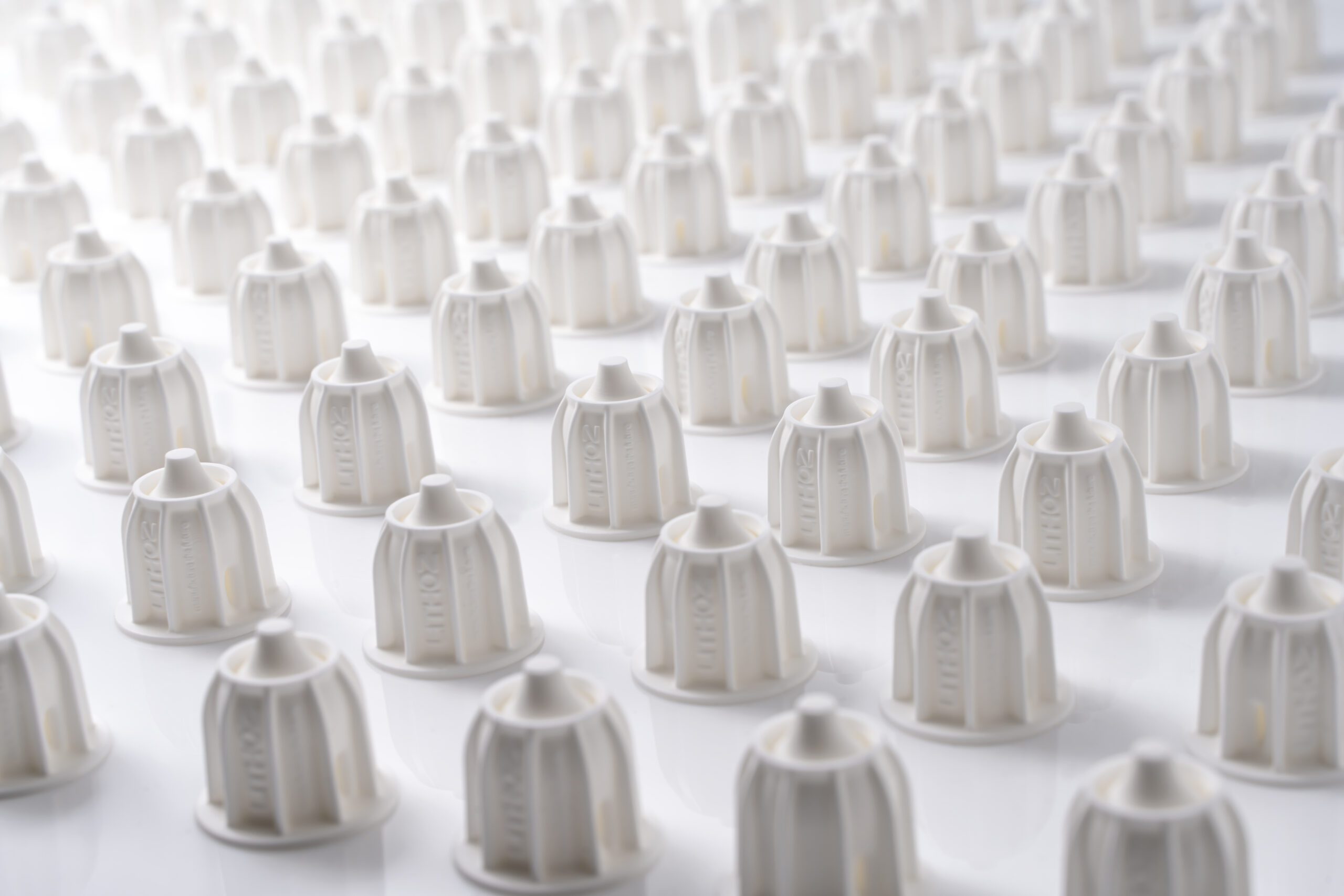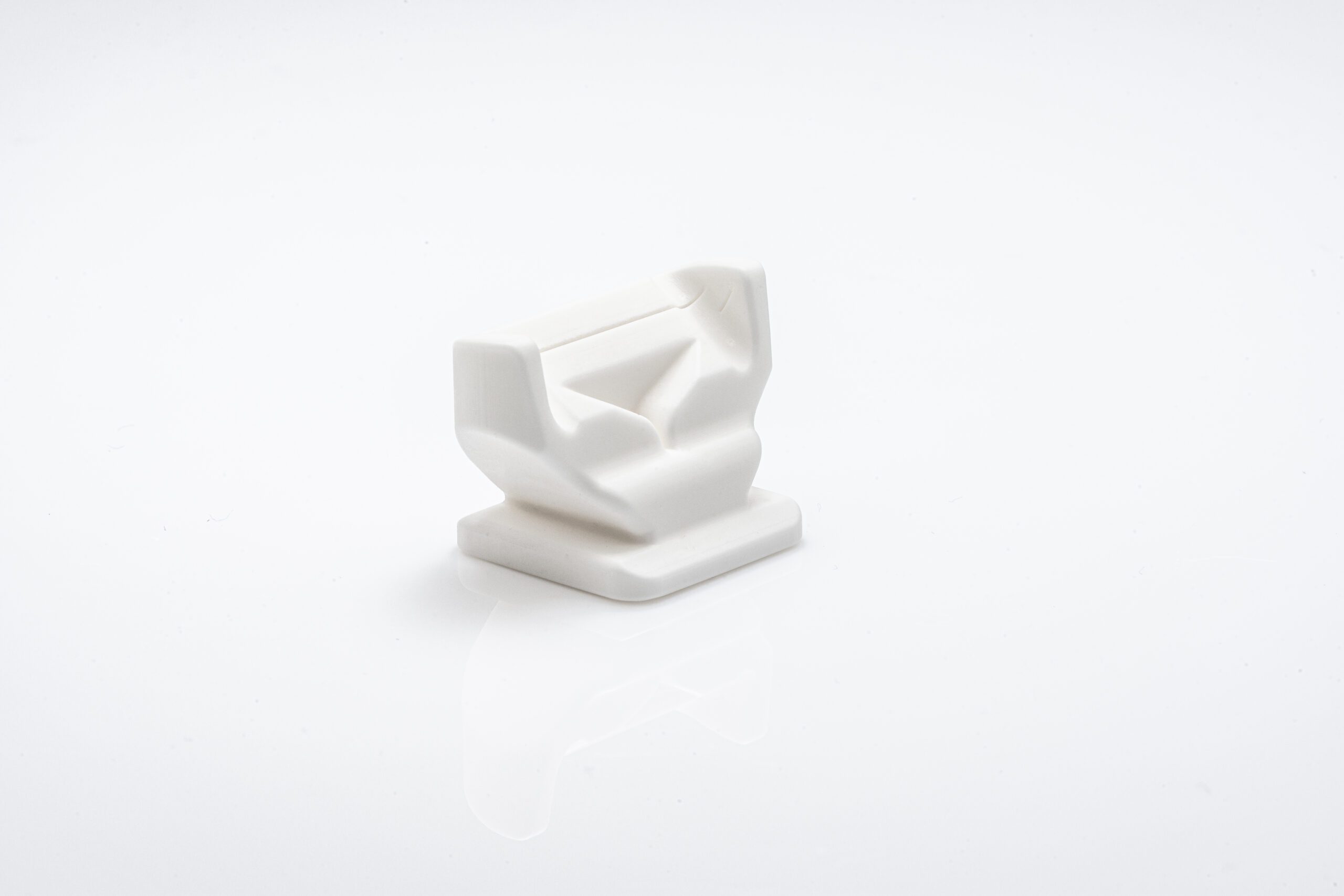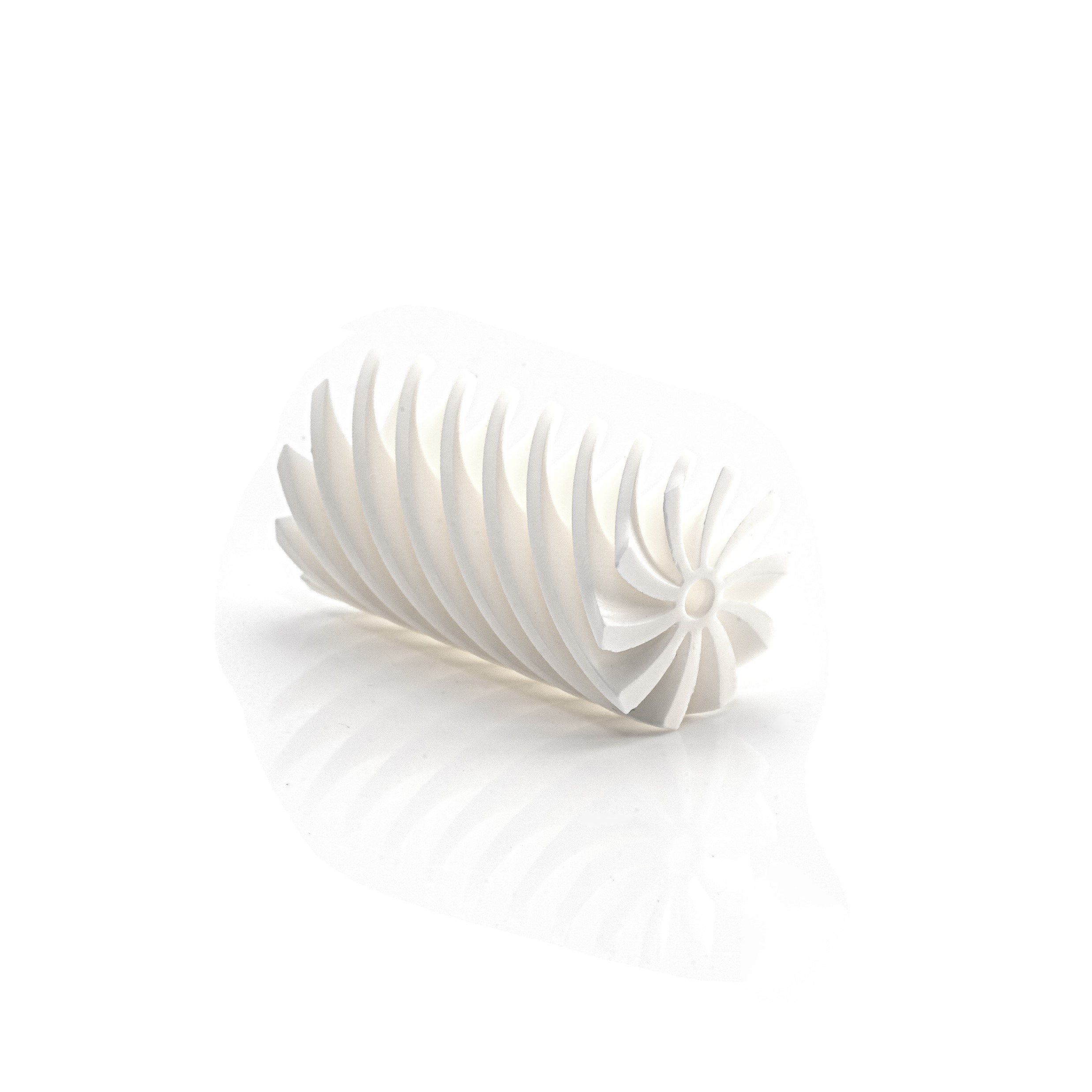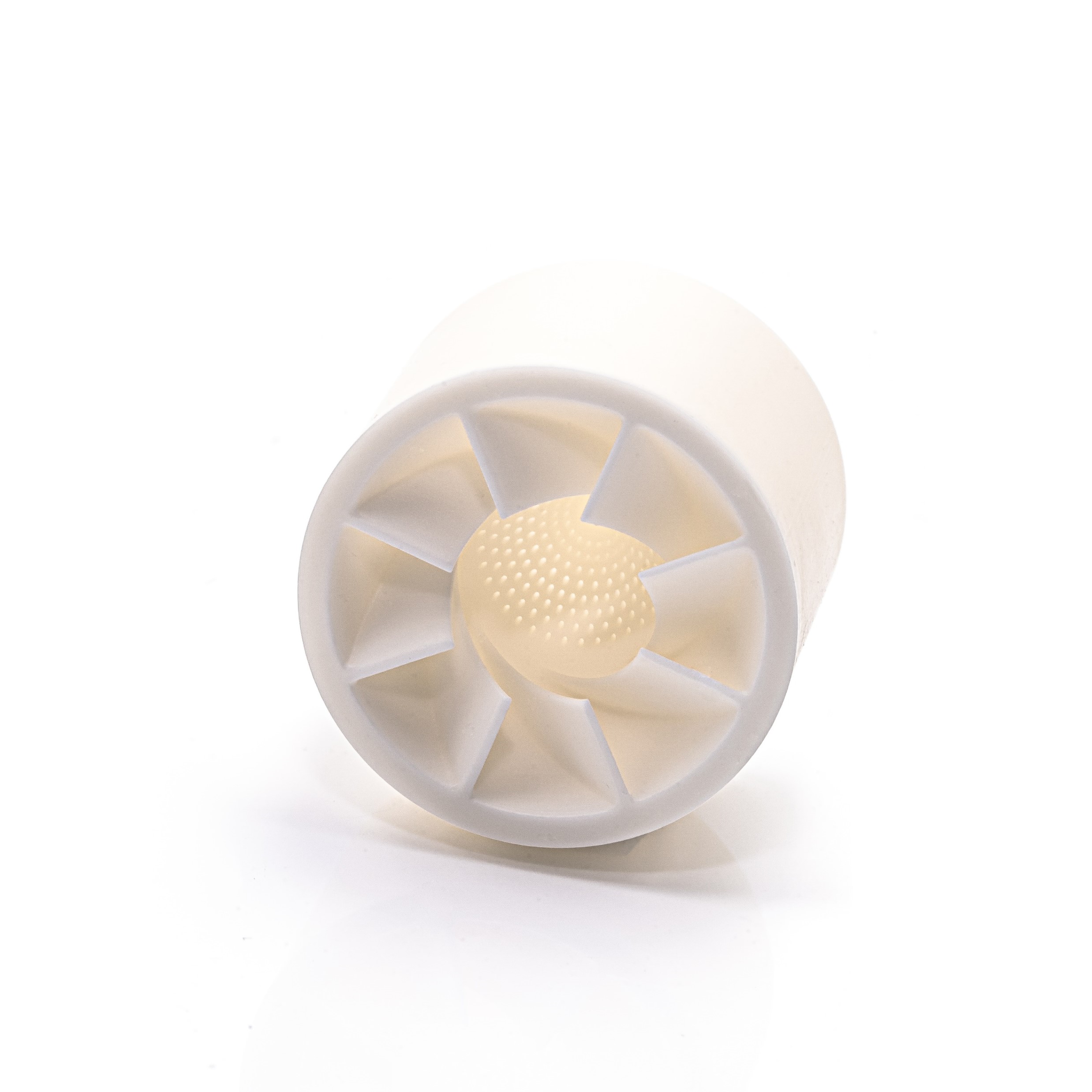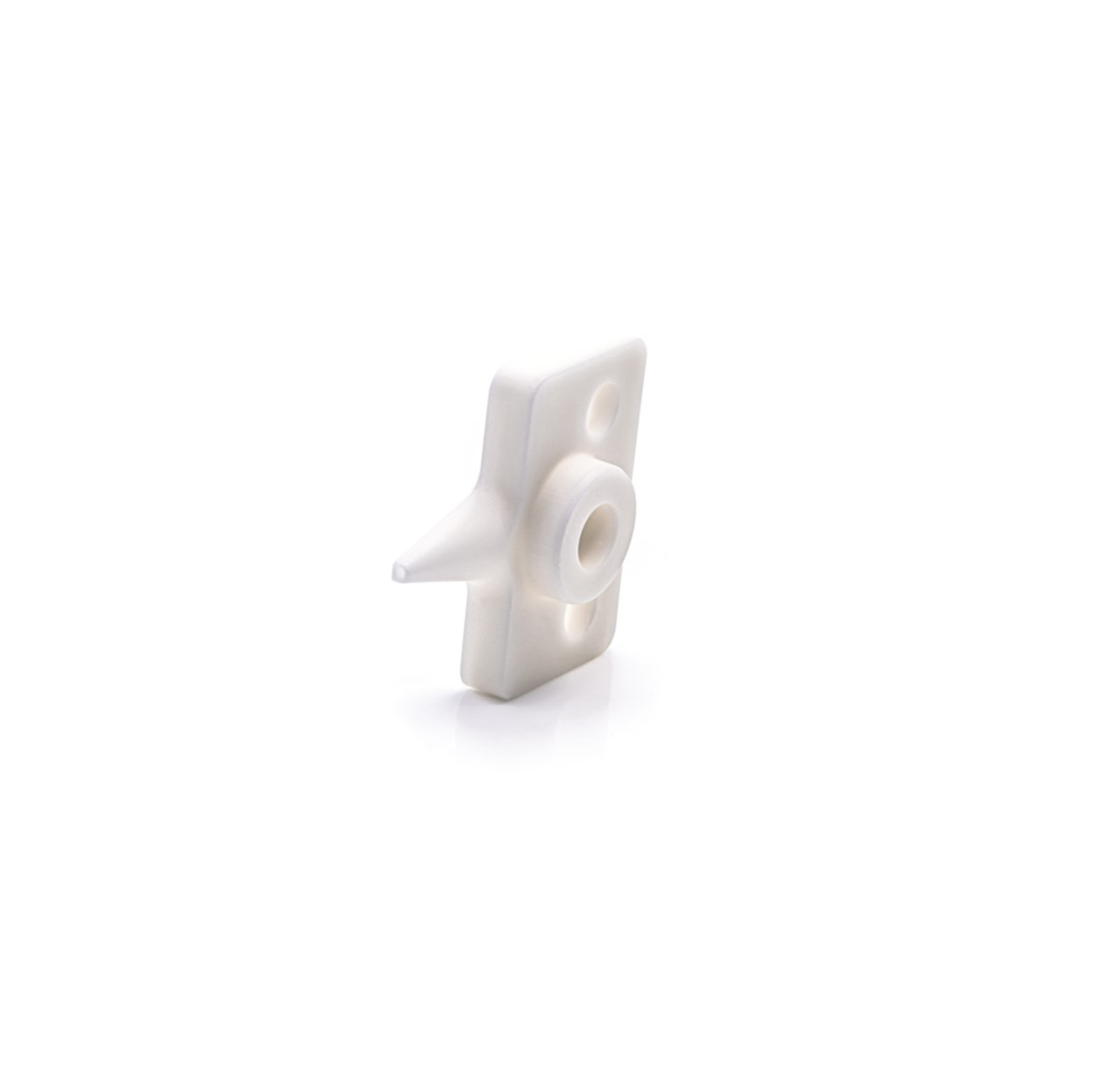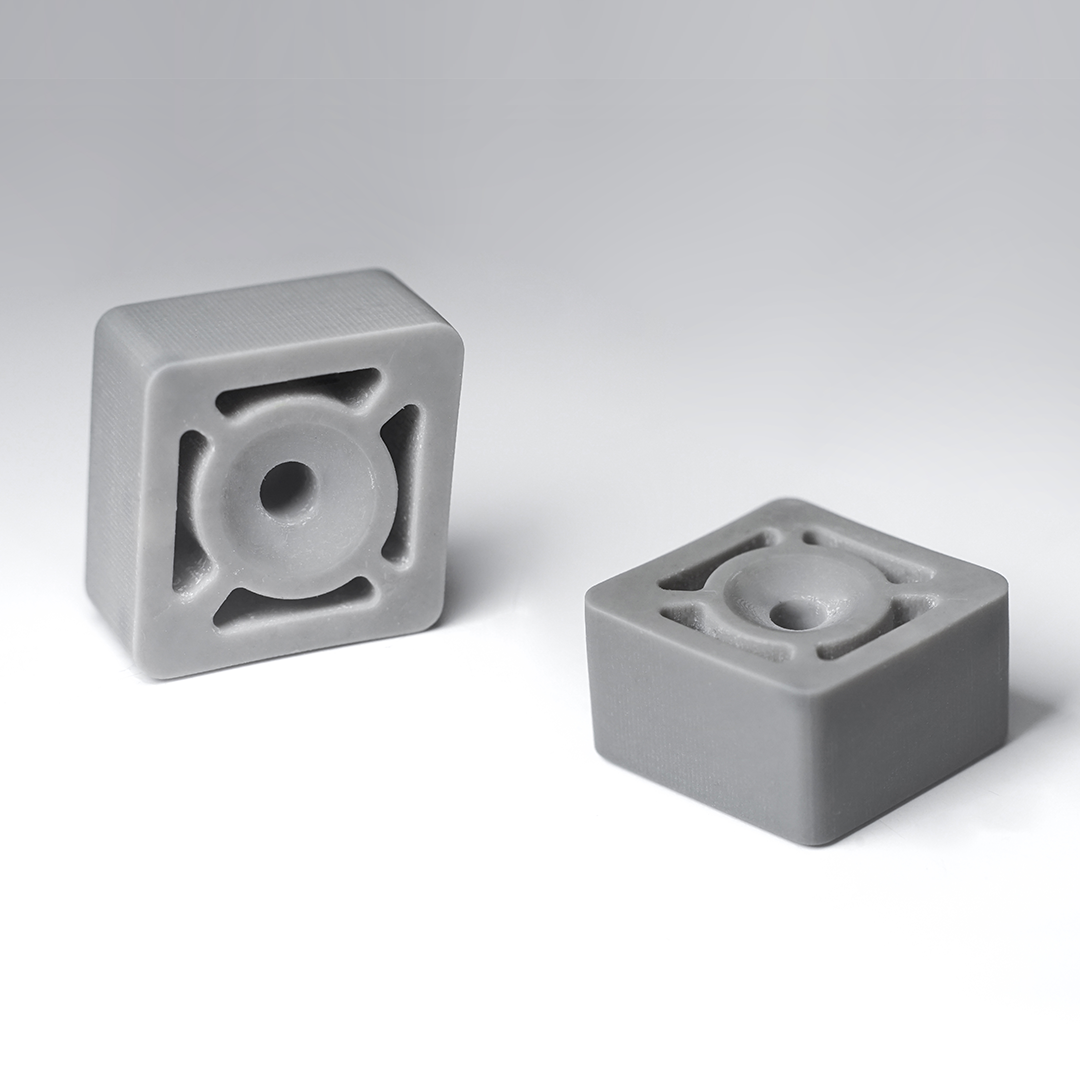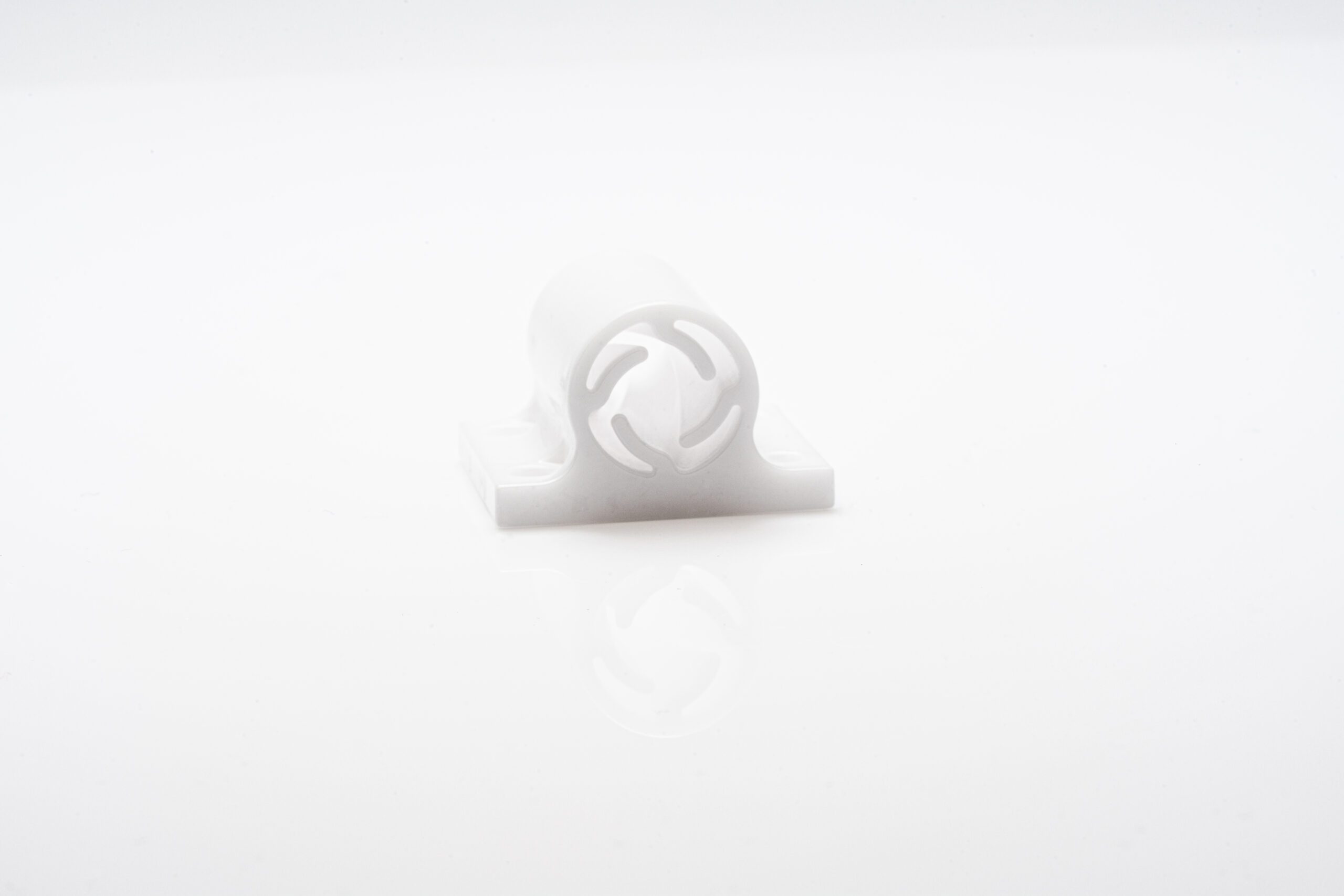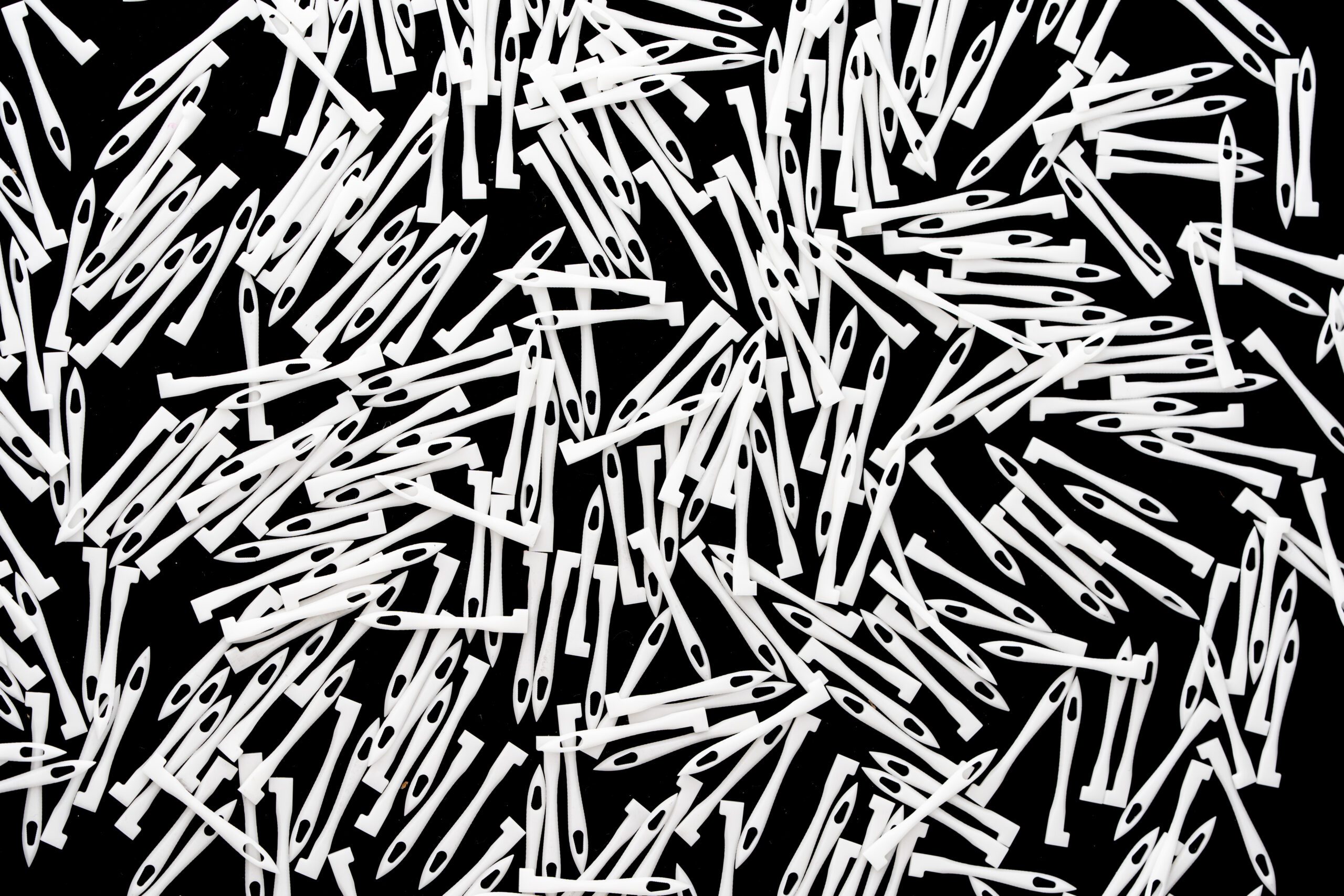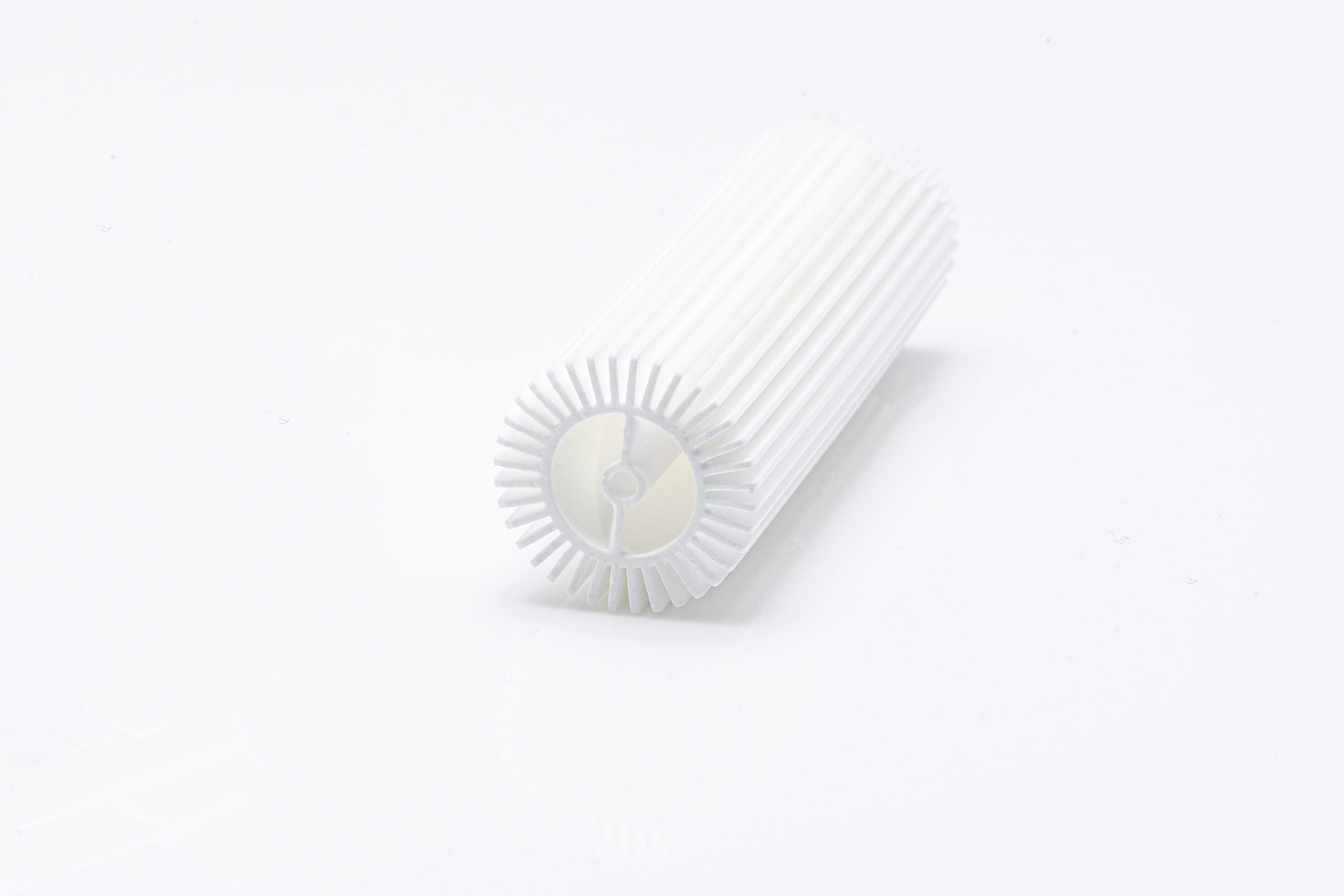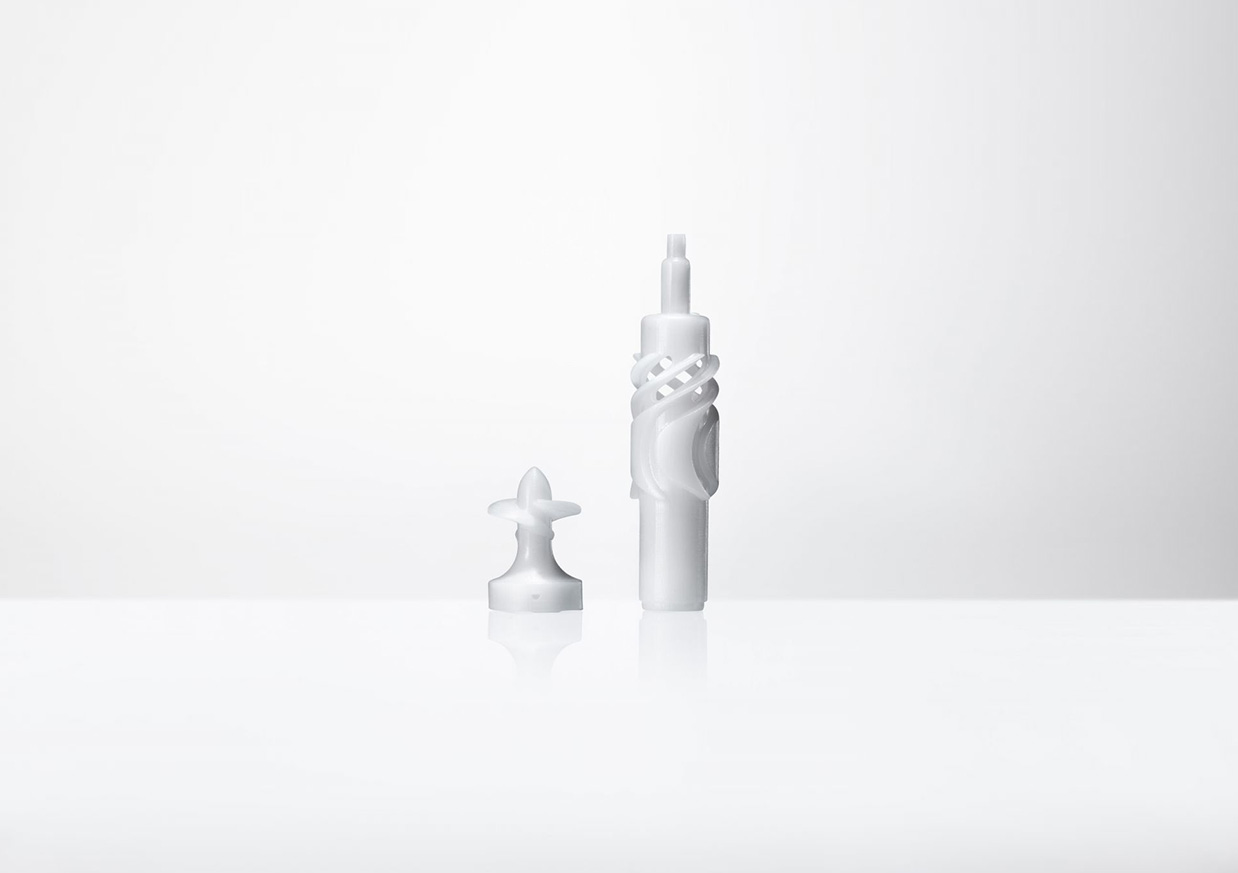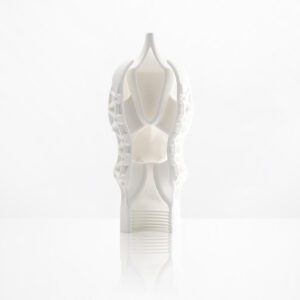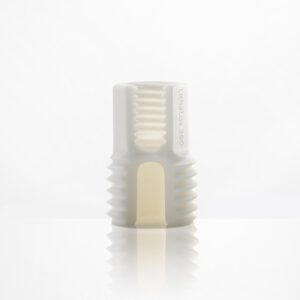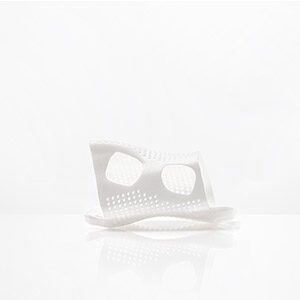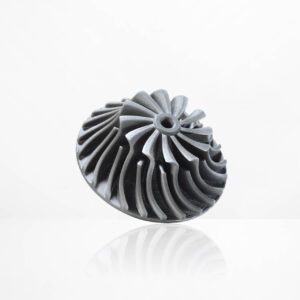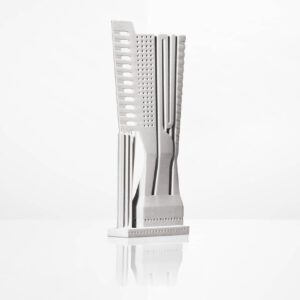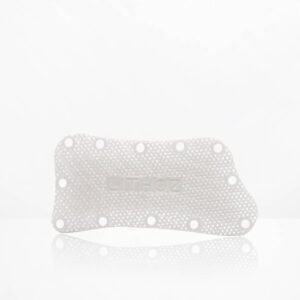
15" LCM-Printed Semiconductor ALD Ring
This 15“ diameter alumina gas distribution ring was manufactured by Alumina Systems using Lithoz LCM technology. Alumina is used to ensure a constant gas flow and pressure even when using reactive gases. Capitalizing on the design freedom of Lithoz LCM technology, the part manufactured performed more effectively than conventionally produced rings thanks to a more complex design, allowing for an exceptionally lightweight and thinwalled structure. Material usage was reduced in key areas and the part could be manufactured onsite, making digital warehouses a reality and saving on storage costs.
